Shōgun Moved A Key Blackthorne Moment To The Season 1 Finale, And I Think It Was The Perfect Choice
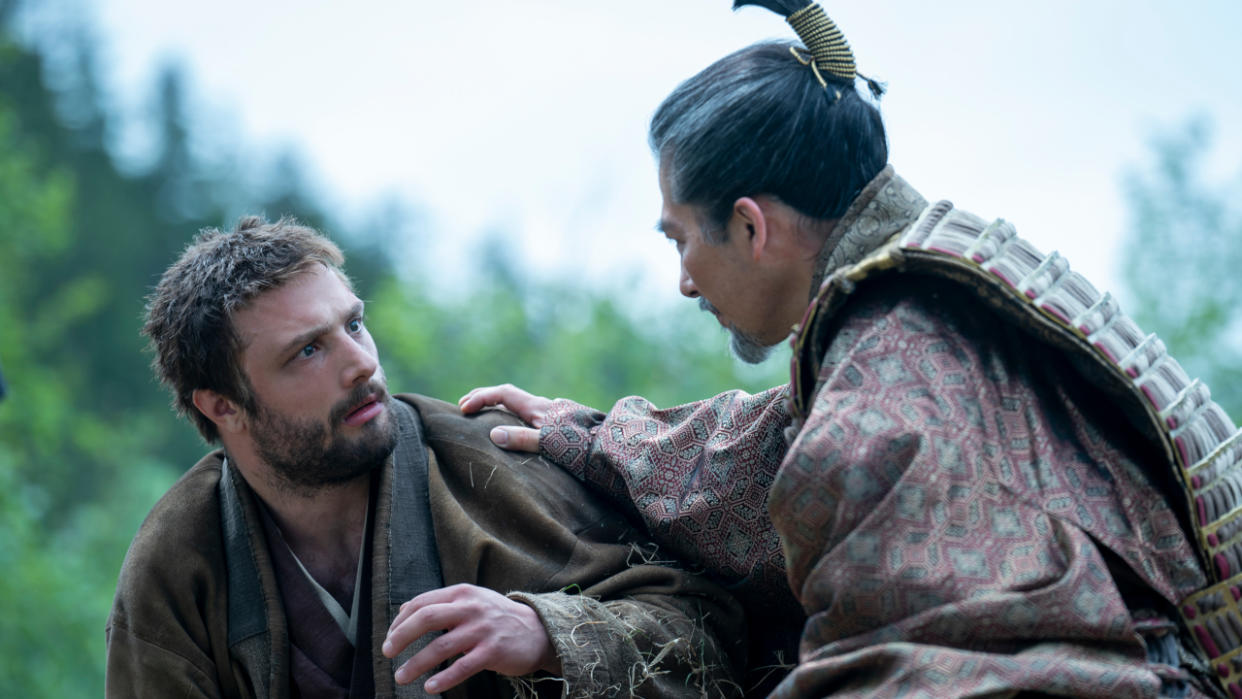
Warning: Spoilers for FX’s Shōgun - “Chapter Ten - A Dream of a Dream” are in play. If you haven’t caught the finale yet, you’ve been warned.
Well dear readers, we’re finally here. After 10 weeks of the 2024 TV schedule treating us to new installments of FX’s hit drama Shōgun, the limited series has taken its final bow. While the potential for a Shōgun Season 2 is still to be debated, this journey with John Blackthorne (Cosmo Jarvis) the Anjin from England has come to a close. And a key moment of that final chapter was actually moved from its place much sooner in author James Clavell’s original text. As CinemaBlend spoke to series creators, the reasons for that shift, as well as even tackling that scene in the first place, were made apparent; and I can’t help but agree that this was the perfect choice.
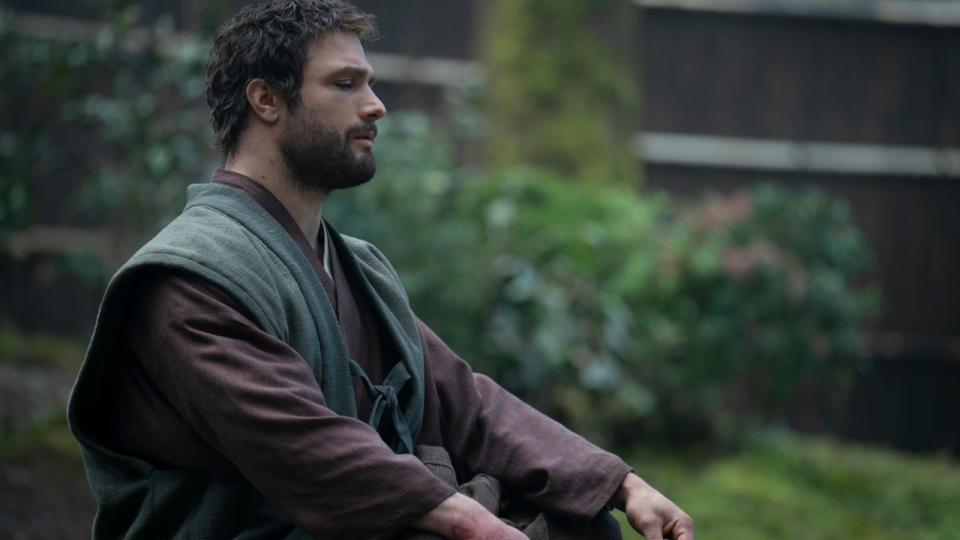
John Blackthorne’s Shocking Shōgun Finale Gesture
Spoilers are about to come into play for Shōgun “Chapter Ten - A Dream of a Dream.” As such, this is the last call for anyone who wants to avoid being spoiled on any moments they may not have experienced. Don’t worry, you can use your Hulu subscription to catch up. So if you’re wary of in-depth details, this is your last chance to leave.
Still here? Good, because the Shōgun moment in question is when John Blackthorne, in an effort to spare the lives of the village of Ajiro, attempts to sacrifice himself in front of Lord Toranaga (Hiroyuki Sanada). Making the gesture in order to convince Toranaga that he doesn’t need to seek out any further traitors in his midst, Blackthorne doesn’t get far with the act.
After basically poking himself with a blade, Lord Toranaga slaps the weapon out of the Anjin’s hands and gives him an order. John Blackthorne is now to build his host a fleet, starting with the reconstruction of the Erasmus, which was burned down recently. Shōgun ends with John leading a crew to salvage the wreckage, which Toronaga admitted to burning down, in hopes of keeping the pilot in Japan.
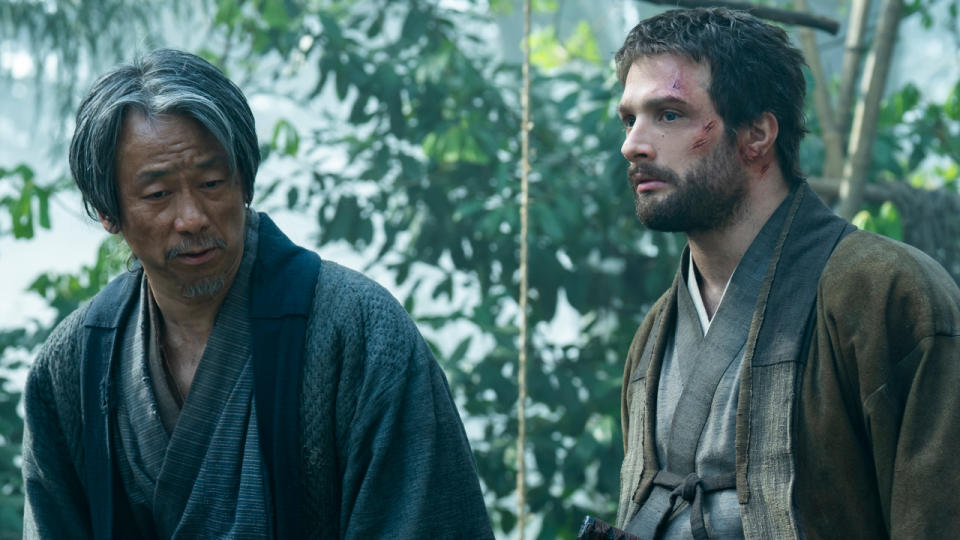
Where Blackthorne’s Seppuku Attempt Landed In James Clavell’s Book
John Blackthorne making the gesture to seppuku himself to save a village is a huge button to put on Cosmo Jarvis’ incarnation of this Shōgun character. While I haven’t read the initial installment to James Clavell’s Asian Saga just yet, I did actually discover in my research that this suicide attempt happens way earlier in the book.
As executive producer/Writer Rachel Kondo explained to CinemaBlend during our interview, this decision was something that she and co-writer/showrunner Justin Marks have been questioned about rather frequently. Here's how she laid out the scene's original place in the book to me:
We talk about this a lot these days … so [Blackthorne’s] seppuku, or his attempted seppuku, is much earlier in the book. It would have been in and around Episode 4. And people sometimes ask us if that was a very intentional move to move it to [Episode] 10.
Initially, I was surprised to learn that this move had been made but hadn’t even thought to bring it up as a formal question. But, as my conversation with Rachel Kondo and Justin Marks continued, the moment’s impact in the finale was mentioned. And, with that door opened, Shōgun’s EPs took the opportunity to explain their thought process; which in turn truly showed me how smart of a move this was.
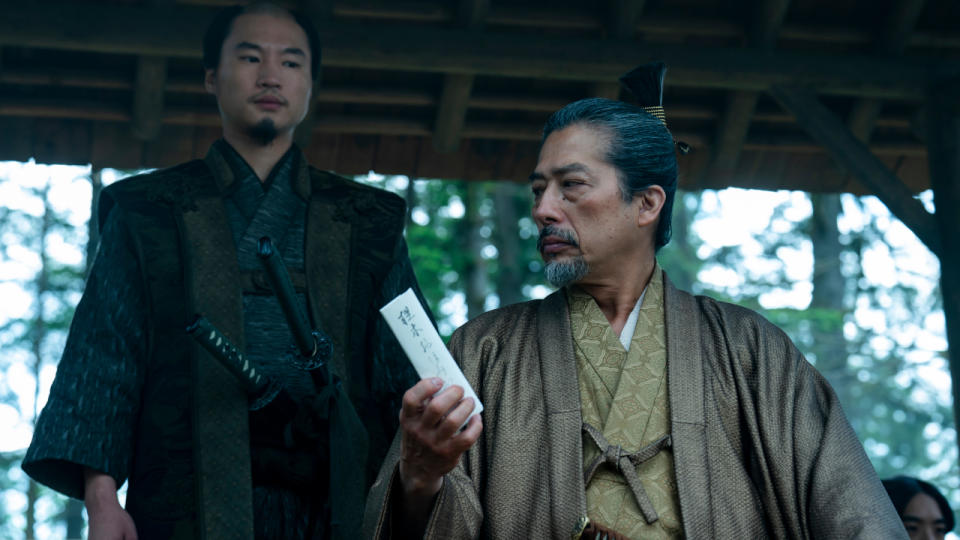
Why Moving That Shōgun Moment To The Finale Was The Perfect Idea
The big reason that Shōgun moved John Blackthorne’s seppuku attempt came down to something that Justin Marks’ previous concerns have highlighted. Indeed, when Rachel Kondo addressed how “Chapter Ten - A Dream of a Dream” took on the moment, she specified that the entire writers' room was worried about when, or if, they would play this card at all. Ms. Kondo expressed that journey while giving these remarks:
What I think is actually just the truth is that it was such a sensitive thing that it felt too soon. Not only for Blackthorne to have that moment, but it felt too soon for us, as writers in the writer's room, to approach that subject matter. We needed to sit with it more, sit with the characters more, understand, wrap our minds around something that was so very culturally different from what we innately know and believe.
As it stands, “Chapter Four - The Eightfold Fence” still offers huge Shōgun twists and turns. Viewers saw Blackthorne starting to acclimate to the culture of his hosts, as well as his forbidden romance with Toda Mariko (Anna Sawai) starting to take shape. Not to mention, the episode ended with that massively gory scene that resulted in the death of Nebara Jozen (Nobuya Shimamoto).
So, to keep the attempted suicide in that episode would have been too much, at least in my eyes. But, also, as Justin Marks would continue to highlight, it was a moment that the writers really challenged the presence of. Marks’ say on the matter even invoked a fun pop culture analogy kids who were around for the original Shōgun’s broadcast will love:
We lifted it first and we didn't know if it would come back in. … We just sort of moved it out. And I feel like, do you remember Pee Wee's Big Adventure, at the end when he is saving all the pets in the pet shop from the fire? You know, [Blackthorne’s seppuku attempt] was the tank of snakes that Pee Wee kept looking at, and then finding another animal to pull out first. And then finally it got to the end, and he just grabs 'em and runs out with it. I think that we had to go through that same process of building up the courage to get there, and knowing what it might take to do it.
Courage can definitely get you most of the way when deciding how to spin such a moment for a modern, more culturally conscious audience. And with that mindfulness came the final hurdle for including John Blackthorne and his decision to somewhat appropriate the act of ritual suicide.
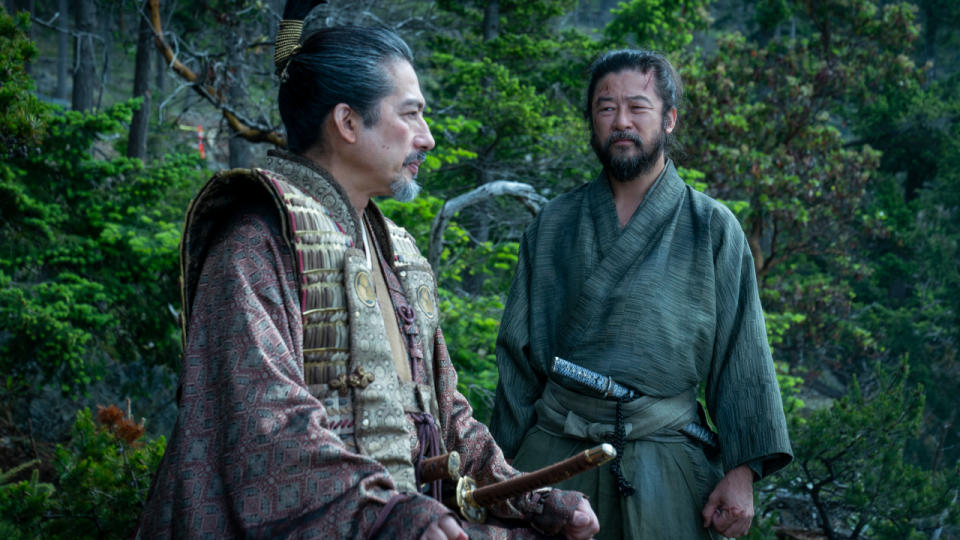
The Two Factors Shōgun’s Writers Kept In Mind With John Blackthorne’s Seppuku Attempt
With the decision to include John Blackthorne’s seppuku attempt, and in the Shōgun finale, Justin Marks had two important factors for consideration that would seal the deal. The first one touches back on the issue of cultural appropriation, as Marks laid out this concern:
If we're gonna have this European character appropriating the act of seppuku, a couple things [had to happen.] First of all, it has to be done kind of badly. Like there's only so much he could sort of really appropriate right.
While Cosmo Jarvis’ character may have witnessed several seppuku rituals before attempting his own, he clearly didn’t learn how to properly carry it out. So Shōgun’s decision to show it for the clumsy, but well-intentioned, act it was was the first step in fending off cultural concerns.
That, of course, left one more hurdle to clear for Justin Marks and company, and this was perhaps the most important. Tying everything together with perhaps the best reason for saving this mid-book moment for the finale to FX’s Shōgun, the showrunner claimed this specific journey needed to happen for Blackthorne’s gesture to have any impact:
But two, the intention that’s beneath it has to be completely honest, you know, and completely pure to get there in that final episode. And, I think it represents the shift. because what he's doing in that moment is he is killing the version of himself that he would have become, had Episode 1 Blackthorne never gone through the events of the show. And he needs to sever the path of his own destiny from that. So when we landed on that, as the sort of realization of how to do it, that's when the show kind of came into focus for us, because it was a journey towards understanding that choice.
Shows like Shōgun don’t come from a vacuum, as evidenced by Rachel Kondo and Justin Marks’ anecdotes above. It’s careful consideration for everything from cultural tone to improving your story that helps craft narratives that, in turn, become highly regarded successes. While there are no immediate plans for any sort of follow-up to this smash hit, the reason is simply that this married couple of creatives want to outdo themselves, in the event that they do return.
I surely hope that they do, as Kondo and Marks have created a series that not only should be talked about for some time, but one that they openly welcome being seen as an inspiration for future producers to do even better with in potential future re-adaptations. Reeling it back to the present, you can see all 10 episodes of Shōgun, now streaming on Hulu.
